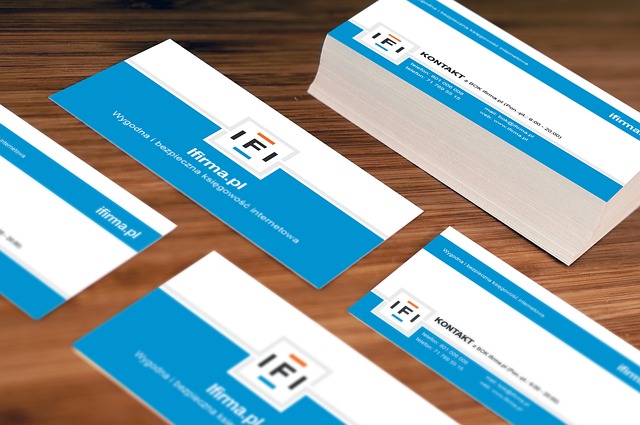Establishing trust is crucial in B2B partnerships, and leveraging social proof through case studies, testimonials, and whitepapers is a powerful strategy. Crafting compelling case studies involves highlighting specific customer experiences with clear goals and measurable outcomes. Testimonials build credibility by sharing authentic success stories. Whitepapers educate decision-makers and position marketers as thought leaders. Integrating these elements in paid ads for B2B marketing enhances brand credibility, attracts prospects, and encourages conversions by showcasing expertise and tangible results.
Building trust is paramount in B2B marketing, where decisions are data-driven and relationships critical. Leveraging social proof through case studies, testimonials, and whitepapers can significantly enhance credibility and influence potential clients. This article explores the power of these tools in fostering trust, offering a step-by-step guide to crafting compelling case studies and strategies for integrating them into your paid ads for B2B marketing. Discover how to tap into the wisdom of real-world examples and expert opinions to differentiate your brand and close deals more effectively.
Understanding the Power of Social Proof in B2B Marketing
In the world of B2B marketing, building trust is a cornerstone of successful partnerships. One of the most potent tools in this arsenal is social proof—what others say about your brand can carry significant weight. Case studies and testimonials serve as real-life examples, showcasing how your products or services have positively impacted previous clients. This social proof not only enhances credibility but also provides concrete evidence for prospective customers to consider.
Whitepapers, on the other hand, offer in-depth insights and research, adding an element of authority to your brand. Combining these three elements—case studies, testimonials, and whitepapers—in your marketing strategy can significantly boost your impact. Unlike paid ads for B2B marketing that focus on attracting attention, this approach focuses on building lasting relationships by demonstrating expertise and fostering trust.
Crafting Compelling Case Studies: A Step-by-Step Guide
Crafting compelling case studies is a strategic move for any B2B marketing campaign, especially when leveraging paid ads. Start by identifying a specific customer and their unique journey with your product or service. Define clear goals and outcomes to showcase how your offering made an impact.
Next, structure the case study with a narrative flow: introduce the challenge or problem, present your solution, and demonstrate measurable results. Use data and statistics to back up your claims, ensuring transparency. Include direct quotes from satisfied customers to add authenticity. Visual aids like charts and graphs can further enhance the study’s impact.
Leveraging Testimonials to Build Credibility and Trust
In today’s competitive B2B landscape, leveraging testimonials from satisfied customers is a powerful tool to build credibility and trust with potential clients. These authentic accounts offer social proof that your products or services deliver tangible results, fostering confidence in prospects who are considering their options. By showcasing positive experiences and outcomes, you create a compelling narrative that resonates with the target audience, setting your brand apart from competitors relying solely on paid ads.
Testimonials serve as a bridge between your business and potential partners, allowing them to envision themselves succeeding with your solutions. Integrating these stories into marketing materials, website content, and even paid ad campaigns for B2B marketing can significantly enhance trustworthiness. When prospects see real companies achieving real results, they are more inclined to take the leap of faith and engage with your brand, turning interested parties into loyal customers.
The Role of Whitepapers in Influencing Decision Makers
Whitepapers have emerged as a powerful tool in the arsenal of B2B marketers, especially when it comes to influencing decision-makers within organizations. These comprehensive documents go beyond surface-level introductions and provide an in-depth exploration of complex topics relevant to the target audience’s challenges and aspirations. By presenting detailed insights, case studies, and data-driven analysis, whitepapers establish the author as a thought leader and a reliable source of information.
In the context of B2B marketing, where paid ads often target specific roles or industries, whitepapers offer a more personalized approach. They cater to decision-makers’ needs by addressing their pain points and demonstrating how products or services can provide solutions. This strategic content marketing technique builds trust by educating potential clients and showcasing expertise in a field, making it an invaluable asset for capturing the attention of influential stakeholders.
Integrating These Elements into Your Paid Ads Strategy
When crafting a paid ads strategy for B2B marketing, integrating case studies, testimonials, and whitepapers can significantly boost your campaign’s effectiveness. These elements act as powerful social proof, establishing your brand’s credibility and trustworthiness with potential clients. Incorporate well-crafted case studies that highlight successful client implementations, showcasing tangible results and the value your product or service delivers.
Testimonials from satisfied customers add an element of authenticity, so feature these prominently in your ads to build rapport. Whitepapers, on the other hand, offer in-depth insights and thought leadership, demonstrating your expertise in the industry. By seamlessly integrating these assets into your paid ads, you create a compelling narrative that resonates with B2B audiences, encouraging them to engage and convert.
Building trust is paramount in B2B marketing, and leveraging social proof through case studies, testimonials, and whitepapers is a powerful strategy. These tools provide concrete evidence of your solutions’ impact, enhancing credibility with potential clients. By following the step-by-step guides and integrating these elements into your paid ads strategy, you can effectively navigate the complex B2B landscape and foster meaningful connections with decision-makers.
